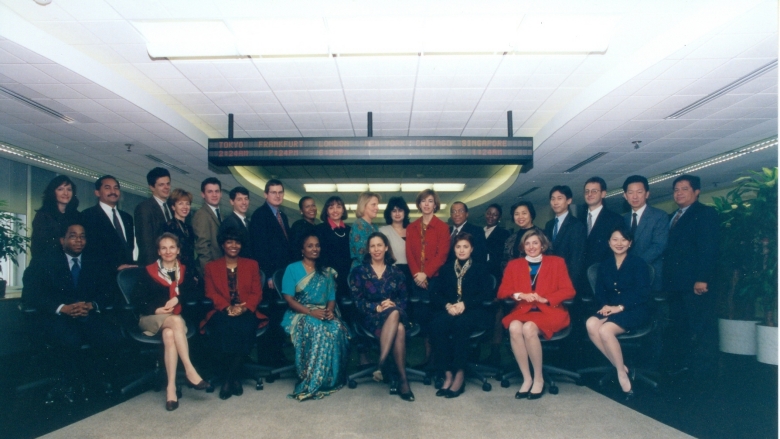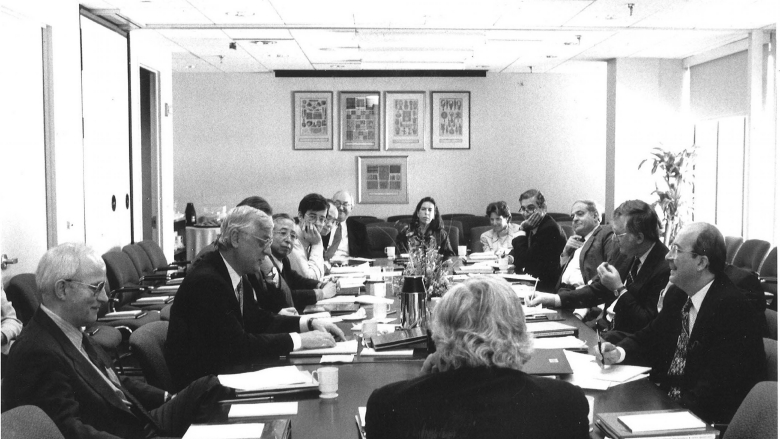On December 31, 1999, World Bank Treasurer Afsaneh Beschloss and her team anxiously awaited the turn of the century, not knowing if the dreaded Y2K bug would strike. Was the technology equipped to handle the transition to the year 2000, or would it wreak havoc on computer systems worldwide?
“I don’t think a lot of people remember it, but in the Bank, we were really worried that the systems wouldn’t work, given that they were not set up to deal with 2-0-0-0. Once we got into the New Year and nothing went wrong, I can’t tell you the sigh of relief,” says Afsaneh. 18 years later, she still smiles as she reflects on this momentous time in the history of the Treasury.
Iranian-born Afsaneh headed the World Bank Treasury after working at the Bank in multiple roles, including overseeing $95 billion as CIO from 1996 through 1999. She began her finance career at J.P. Morgan in London and New York, after earning a Master’s degree in Economics with Honors from the University of Oxford in 1978. Her original plan to return to Iran, where she grew up, was dashed after the 1979 Islamic revolution shook the world - and Afsaneh’ s career path.
“While my original plan had been to go back to Iran that was no longer an option, especially for a woman post 1979, anyways.”
Afsaneh’ s years as Treasurer were marked by a different kind of ‘digital revolution’, with several groundbreaking innovations.
“I think this time was really interesting when it came to technology.”
To kick start the new millennium, the World Bank Treasury issued the first fully integrated electronic bond (“E-bond”) in January 2000. This US$3 billion five-year issue was the first bond to be offered globally via online platforms. For investors, this internet bond was revolutionary. Until then, this type of product had only been available to institutional investors. Now mid-size and retail investors could access this market information.
The global notes surpassed expectations. By 8am, Washington time, on the issue day, the order book had exceeded $5 billion. Of that, $1.7 billion of orders came via the internet.
At the time E-bonds were among the most pioneering, cutting-edge financial products on offer.



